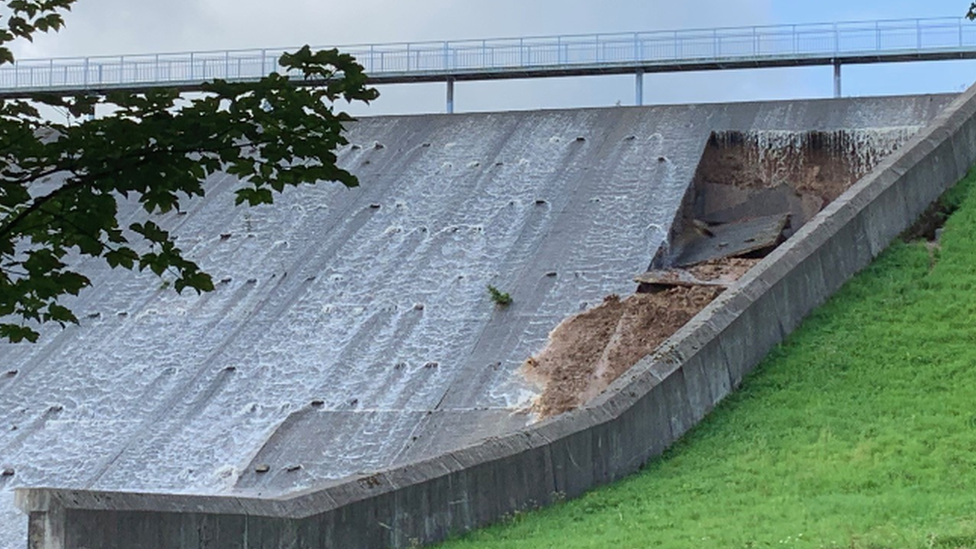Whaley Bridge dam: 'Two days' more pumping needed
- Published
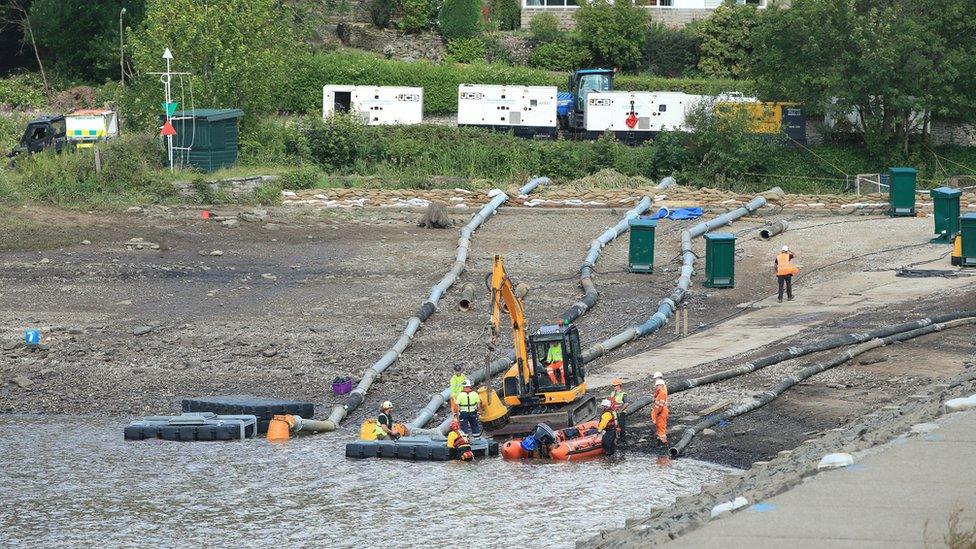
About 7,000 litres of water a minute are being pumped from the reservoir
Crews need to spend at least two more days pumping water from a reservoir to stop its dam bursting and flooding a town, firefighters have said.
Whaley Bridge residents are spending a fifth day out of their homes because of the partial collapse of the dam wall.
Toddbrook Reservoir is 46% full but needs to drop to 25% before the 1,500 people evacuated are allowed home.
The government said it was considering a national review into the structural safety of dams across the country.
The Department for Environmental, Food and Rural Affairs (Defra) said the focus was on Whaley Bridge but it would be "following the advice of expert engineers on the best way forward".

Photos show how the water levels at the reservoir have dropped since Friday
Labour leader Jeremy Corbyn has visited the dam, following Boris Johnson's visit on Friday.
Escorted by High Peak's Labour MP Ruth George, Mr Corbyn thanked emergency service workers for their efforts, expressed sympathy to residents and said an inquiry would need to take place.
"Hopefully people will be able to return to their homes but of course there has to be then the question of long-term repair to the dam and the safety of it in the future," he said.
"There has to be an inquiry. An inquiry to make sure all the co-ordination worked effectively, and everything I have seen shows it did, but there are always lessons to be learned."
Whaley Bridge: Couple evacuated days before wedding
The dam is said to be "relatively stable" after four days of efforts to bolster it.
But Derbyshire deputy chief fire officer Gavin Tomlinson said the operation would continue "for a few days yet".
Crews using 23 high-volume pumps have removed more than a third of the reservoir's water since part of its spillway collapsed on Thursday following heavy rainfall.
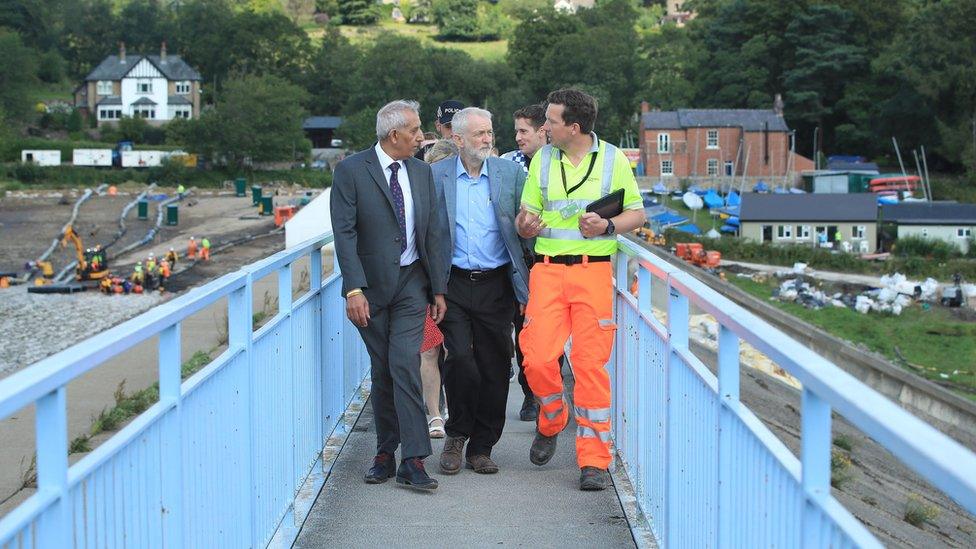
Jeremy Corbyn was given the latest on the operation to pump water from the reservoir
Mr Tomlinson said: "We're now below half the level we want and we're now aiming for about 25%.
"If the calculations are right we should be able to get below the level of the damage on the dam wall which will allow the engineers and the specialists to assess it.
"As soon as we get the water level down to a safe level, then the emergency phase is over and then the contractors can look at the repairing of the dam wall."
Drone footage shows Whaley Bridge's new road
RAF Chinooks have dropped more than 500 tonnes of aggregate into the damaged section of the wall to reinforce it.
Wing Cdr John Coles said: "I think the assessment is now that actually the dam is relatively stable."

At the scene
By Keith Doyle, BBC News
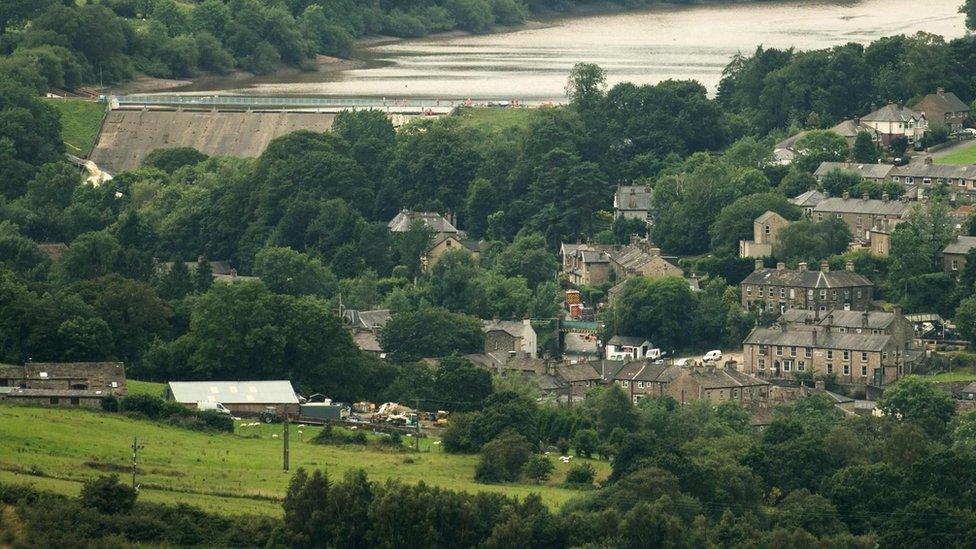
Much of the town lies beneath the reservoir's water level
A quiet rural field at the edge of the Toddbrook reservoir is now at the centre of a massive engineering operation, with 10 high-volume pumps in a line along a hastily constructed road.
In the water there are another 12 pumps submerged, and every so often as the water levels drop they have to be turned off and moved back into the water.
Locals have moved cars and livestock and allowed the emergency services to break down walls and fences to get access.
They say any inconvenience they are experiencing is nothing compared to what the evacuated residents from the other side of the dam are going through, and in the meantime they are supplying food and drinks to workers from the safe side of the reservoir.
While this is not over, there is a feeling among the emergency services - and the locals that have come to watch the operation - that the critical dangerous stage has passed.

The Canal and River Trust, which owns the dam, said it carried out an annual inspection of the structure in November and it was "absolutely fine".
Watersafe UK, a charity specialising in search and rescue operations, said it had 20 teams on standby to assist if the dam burst.

RAF Chinooks have dropped more than 500 tonnes of aggregate

Rachel Swann said people refusing to leave their homes were putting themselves and officers in danger
Police have sharply criticised 20 residents from 16 homes who are refusing to leave.
Deputy Chief Constable Rachel Swann said: "We've evacuated this because there is a real prospect that the dam could fail, and if it fails it is catastrophic.
"People would die if they were in that evacuation zone. So those people who remain in that zone are putting their lives at risk.
"They are also putting the lives of the responders, primarily the police, at risk because we have to keep going in and speaking to them and asking them to leave."
Ms Swann said the emergency operation was "ahead of schedule" and she was hopeful engineers would be able to assess the dam integrity later so they could potentially begin making plans to allow residents back home.
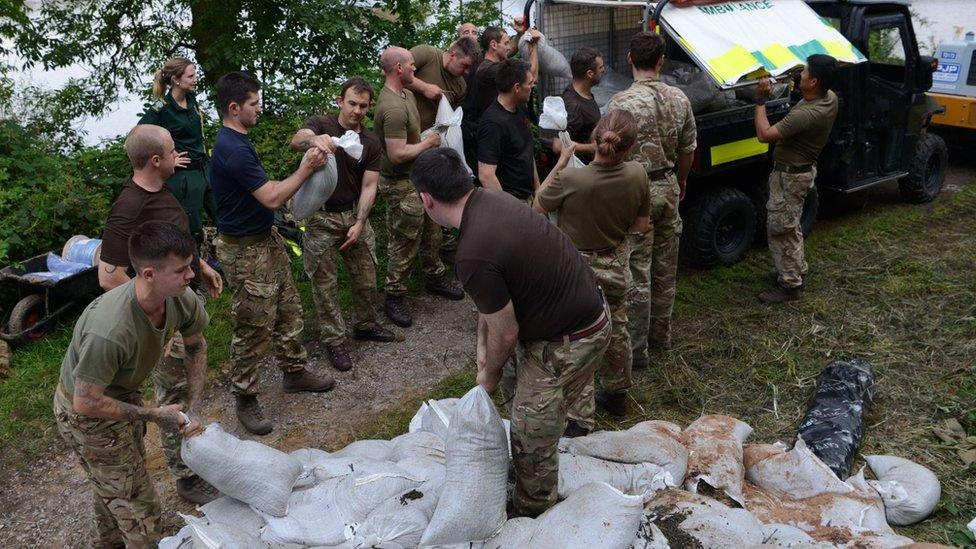
Army troops have also been drafted in to help with the operation to shore up the dam wall
The situation at Whaley Bridge has continued to disrupt train services, with East Midlands Trains reporting delays, external on a number of routes.
TransPennine Express services have also been affected, external.
The Canal and River Trust said it was monitoring water levels in the nearby River Goyt, where the water removed from the Toddbrook Reservoir is being taken.

Richard Coakley, a former president of the Institution of Civil Engineers, told the BBC it would take years to get the dam back into full operation.
He said: "It's a long haul actually back for a proper dam to provide water supply to the canal system.
"There'll be lots of investigation taking place about how it failed and the reasons for that, and eventually they'll have to take out everything that [the] Chinook has put into that hole and start to reconstruct the spillway in accordance with modern systems and modern techniques to actually make it safe."

Follow BBC East Midlands on Facebook, external, Twitter, external, or Instagram, external. Send your story ideas to eastmidsnews@bbc.co.uk, external.

Do you live in the evacuation zone? Share your story by emailing haveyoursay@bbc.co.uk, external
Please include a contact number if you are willing to speak to a BBC journalist. You can also contact us in the following ways:
WhatsApp: +44 7756 165803
Tweet: @BBC_HaveYourSay, external
Text an SMS or MMS to 61124 or +44 7624 800 100
Please read our terms of use and privacy policy
- Published5 August 2019
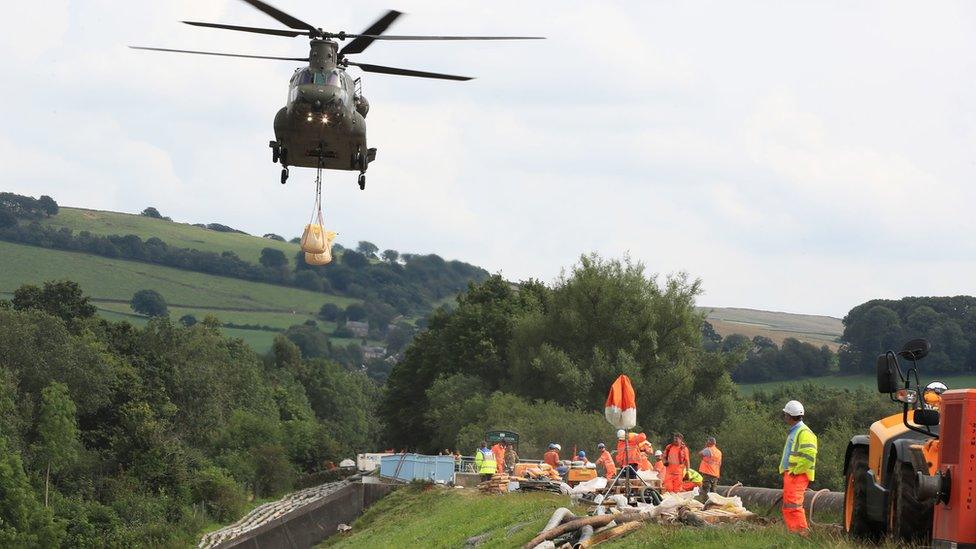
- Published6 August 2019
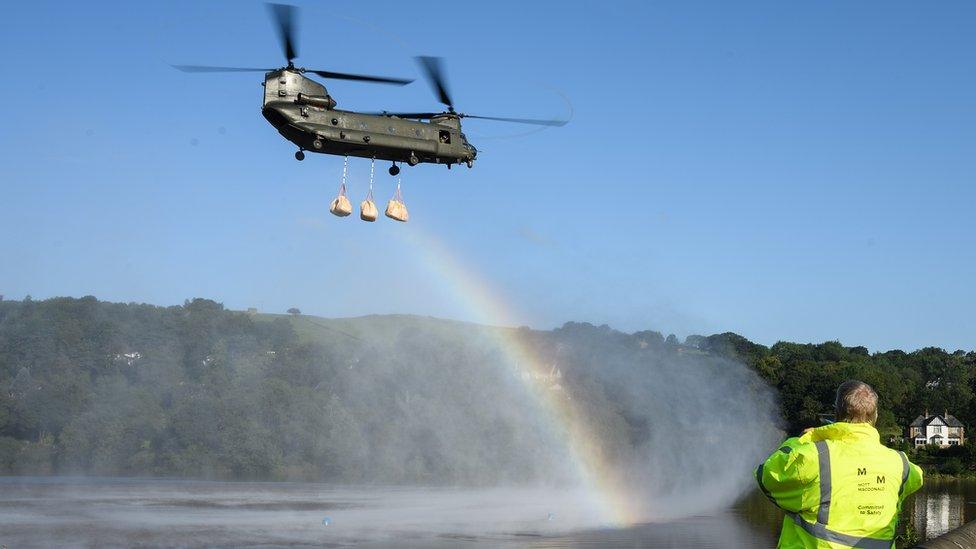
- Published2 August 2019

- Published2 August 2019
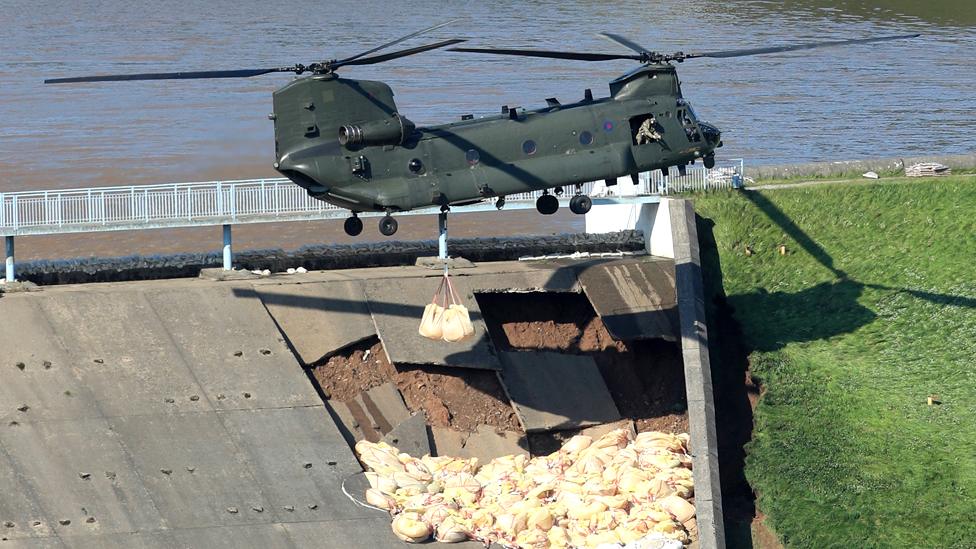
- Published2 August 2019

- Published1 August 2019
